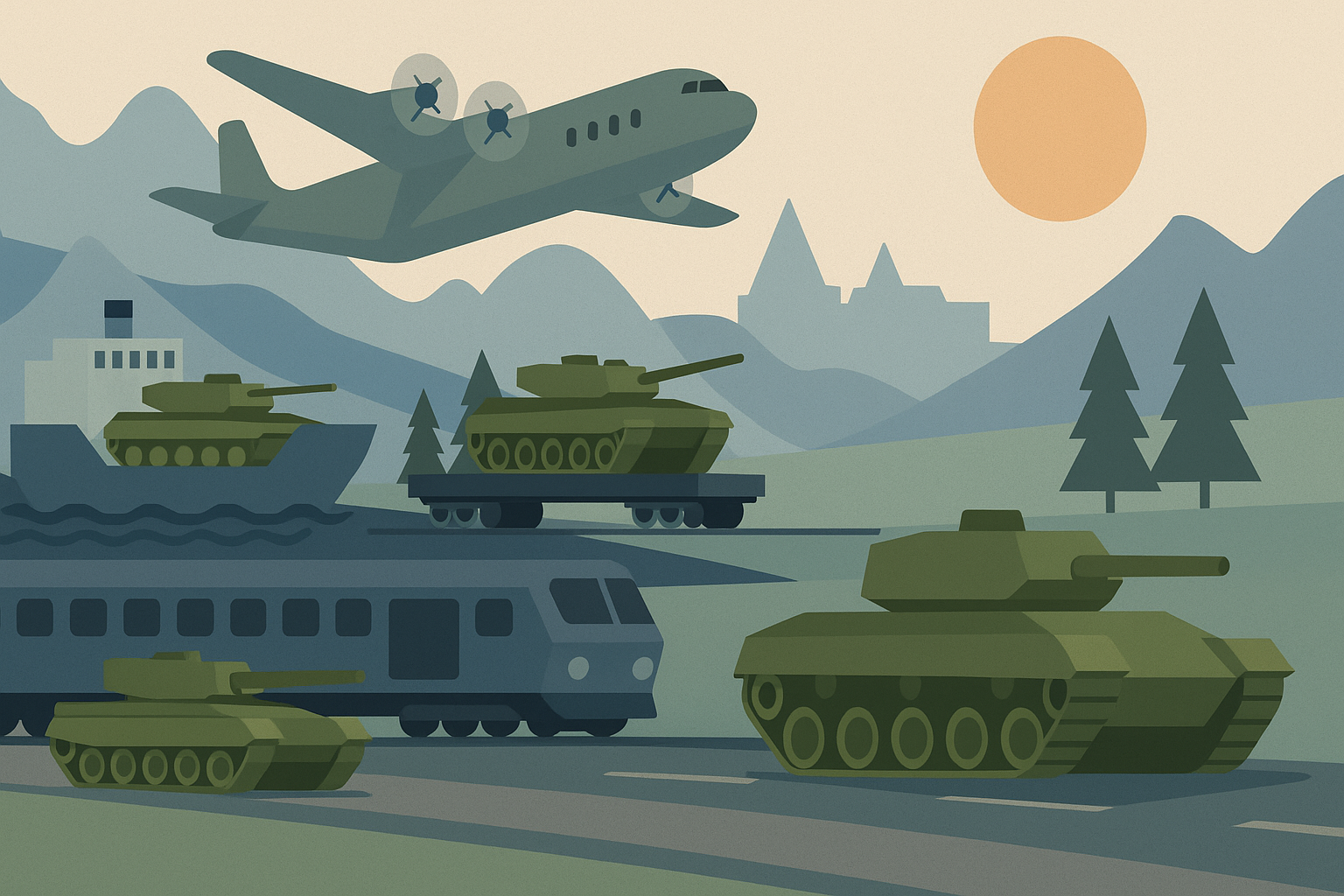The European Commission, working closely with national governments and NATO, is preparing an ambitious plan to enable the fast and coordinated movement of tanks, heavy artillery, and military supplies across the continent in the event of war.
A Pan-European “Military Mobility” Network
According to officials familiar with the initiative, the proposal — expected to be unveiled next month — includes the creation of a shared pool of transport assets such as trucks, rail carriages, ferries, and cargo aircraft. This “solidarity pool” would allow EU member states to lend or share transportation resources with one another when rapid deployment of forces is needed, particularly if Russian aggression were to extend beyond Ukraine.
The plan builds on the EU’s existing cooperation models, such as the bloc’s shared firefighting resources. However, officials acknowledge that the new military mobility framework will be far more complex due to the range of transport ownership structures and the heavy logistics involved. Many armies, for instance, rely on privately contracted carriers for moving equipment rather than owning their own vehicles.
Enhancing Defence Readiness and Infrastructure
The initiative comes amid renewed urgency to strengthen Europe’s defence posture after decades of underinvestment. Recent Russian incursions into NATO airspace and the continuing war in Ukraine have heightened fears of broader instability. EU leaders recently agreed that bolstering defences along the eastern flank and improving logistical coordination should be treated as top priorities.
Under the proposal, EU countries will first be required to register all available transport assets that could assist in military mobilization. Brussels is also studying the feasibility of developing its own fleet of military-grade trucks and rail carriages, though officials admit this could be difficult given current budget constraints.
Key Role for Germany and European Industry
Germany, due to its central location, is expected to play a major logistical role in any crisis scenario. The German military has already signed agreements with Deutsche Bahn Cargo to transport tanks and armored vehicles, while the defence contractor Rheinmetall will provide support for military convoys. Lufthansa, the country’s flagship airline, has even offered to assist with aircraft maintenance and fighter pilot training if required.
The rail industry, represented by the Community of European Railway and Infrastructure Companies (CER), estimates that moving a light division — roughly 15,000 troops and 7,500 vehicles — could require as many as 200 trains, each with up to 42 wagons, amounting to 8,400 loaded wagons in total. Rail infrastructure would also need to be strengthened, as wagons must carry loads of at least 22.5 tonnes per axle to transport heavy military equipment.
Cutting Bureaucracy and Building a Unified Network
Beyond logistics, the European Commission is also focused on streamlining border crossings and customs procedures to shorten the time it takes for armies to move across the EU. Other elements of the plan include aligning rail gauges between countries and ensuring bridges and roads can support the weight of armored convoys.
In a white paper published in October, the Commission outlined its vision to establish by 2027 an EU-wide “military mobility area” — a coordinated network of land corridors, airports, and seaports, with harmonized rules and infrastructure capable of supporting rapid troop movement.
The goal, officials emphasize, is to ensure that Europe’s military forces can deploy swiftly and seamlessly in response to any threat — and to demonstrate that the continent is prepared to defend itself, in closer coordination with NATO and independent of U.S. logistical dependence.








